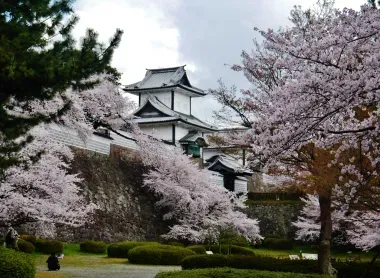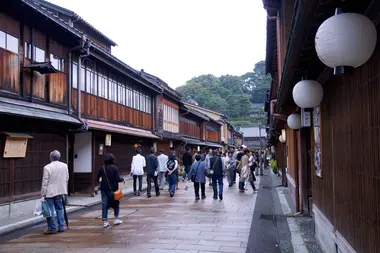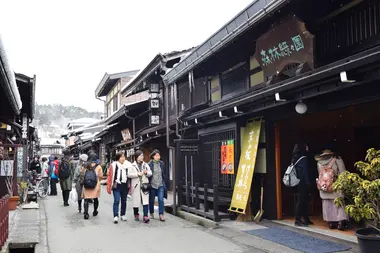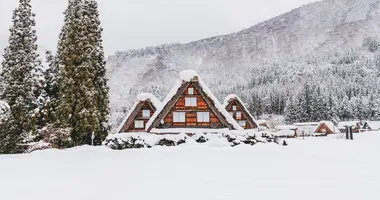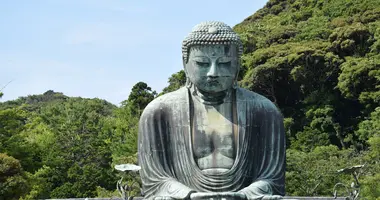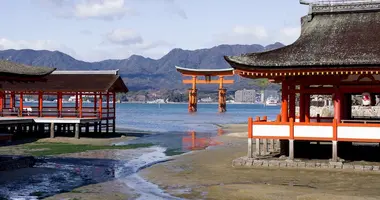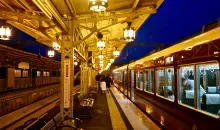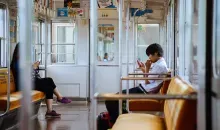How to get from Kanazawa to Takayama
- Published on : 03/05/2024
- by : Joshua
- Youtube
Go from Kanazawa to Takayama with the Hokuriku Shinkansen and the Hida Express Train!
How to get from Kanazawa to Takayama via train
Takayama Station
Central Honshu is much more than just Tokyo, Osaka, and Kyoto. For many locals in Japan, the charming boutique towns of Kanazawa in Ishikawa Prefecture and Takayama in Gifu Prefecture are some of the best destinations in the country, displaying a more modest and palatable look into Japanese life and culture.
Kanazawa is a city that encapsulates the Japan of old and new. With a long-running history and significance with the Maeda Clan, there’s plenty for culture enthusiasts to check out. Additionally, the city was virtually untouched during World War II, with its historical locations preserved, such as the famous Higashi-Chaya tea district. Also, be sure to visit the famous Kenroku-en Garden, one of the three most beautiful gardens in Japan. Nearby, the 21st Century Contemporary Art Museum provides a glimpse into Kanazawa’s appreciation for beauty in the modern age.
Takayama in Gifu is prominently blessed with rolling mountains and rolling rivers of the Japanese Alps. Green pastures and foliage characterize the surrounding areas, and the heart of the town is a charming community with modest shops and restaurants that specialize in local fare. Everything from famous Hida Wagyu Beef to foraged mountain vegetables will appear on your plate. Enjoy the scene of the river cutting through the town of Takayama for the full experience.
The two cities, while not directly connected via public transport, are most easily traversed via a combination of the Hida Limited Express train and the newly expanded Hokuriku Shinkansen. On this Shinkansen bullet train line, the Kagayaki and Hakutaka Bullet Train can be ridden.
Trains available on this itinerary:
| Hida Limited Express Train | Kagayaki Shinkansen Bullet Train | Hakutaka Shinkansen Bullet Train |
Reserving seats on trains
On limited express trains and Shinkansen bullet trains, individual ticket holders and Japan Rail Pass holders can reserve seats in advance of boarding. Reservations are typically not required for Shinkansen bullet trains because they frequently have non-reserved cars with seats available on a first-come, first-served basis. These are often the car numbers 1-4.
On certain trains, reservations are required for every car. However, it is highly recommended that all travelers try to book tickets during the busiest travel seasons in Japan, which are the spring and the New Year's holiday. When buying a single ticket, a reserved seat costs extra, but Japan Rail Pass holders are free of this charge.
Oversized Baggage on the Shinkansen
On the Hida Limited Express and Hokuriku Shinkansen, there are no special regulations for oversized luggage like there are on the Tokaido-Sanyo Shinkansen however, be aware that space on the Shinkansen can be limited during peak travel times.
For travelers who are interested in learning more about the specificities of the Tokaido-Sanyo Shinkansen bullet train luggage regulations, take a look at our article below.
Exploring Kanazawa
Many people characterize Kanazawa as a city that values beauty above all else. Sleekly occupying the greatest position in Hokuriku, the capital of Ishikawa Prefecture was spared much of the damage during World War II, leaving its ancient neighborhoods and traditional crafts substantially intact to this day. The Hokuriku Shinkansen's current terminus is ideally situated for exploration and discovery, as it is completely walkable.
The term "golden marsh" is derived from the name Kanazawa and is aptly reflected in numerous attractions inside the city. A city highly recognized for its artistic talent, a multitude of crafts from this area make use of gold details, and one can view them in a plethora of diverse workshops and galleries located all throughout the city. And sweet tooths will love the soft-service ice cream at dessert stations throughout, which is garnished with gold leaves. Wearing traditional yukata, many tourists from both inside and outside of Japan stroll around this region of Kanazawa. Naturally, the area has cafes and restaurants, stores offering trinkets and handicrafts, and traditional tea houses. See Yamano-o, a traditional Japanese ryokan and kaiseki restaurant run by the same family for five generations, at the top of the hill overlooking Higashi-chaya.
When it comes to gastronomy, Kanazawa is a top destination, with seafood from the Japan Sea and Toyama Bay leading the way. Often referred to as the “kitchen of Kanazawa,” Omicho Market is a short stroll from the main station. Here, guests may explore the various stalls and sample the fresh foods of the prefecture. In addition, the market has many excellent restaurants that are worth visiting for a satisfying dinner. Ishikawa is well-known for his nodoguro, or Black Throat Seaperch. It's a wintertime specialty from the area known for its creamy white meat and fattiness, and it's a staple at many of the city's eateries.
The Hokuriku Shinkansen, which travels from Tokyo across Honshu Island to the Japan Sea Coast, ends at Kanazawa Station. The Tsuzumimon Gate, a massive gate-like structure in front of Kanazawa Station, is the main attraction there. This building is intended to mimic a torii gate from Shintoism as well as a tsuzumi, a type of traditional Japanese drum. This gate has come to represent Kanazawa itself, and from afar, many people think that the location of the gate and the station's dome mimic a samurai helmet.
Exploring Takayama
One of the rare landlocked prefectures in the Japanese archipelago is Gifu Prefecture, where Takayama is situated. It is endowed with beautiful valleys with pure rivers flowing through them, rolling mountains, and other natural beauties that more than make up for its absence of a seacoast. The charming neighborhood of Takayama is the ideal place to witness the splendor of Japanese countryside and wildlife, which are frequently only shown in the media for Western audiences.
One of the main draws in the area is Shirakawago, a small village with traditionally built thatch-roofed homes and buildings. Despite being a historic UNESCO heritage site, this is a rather crowded region, which adds to the authentic and lively character of the town. The quaint, charming town of Hida is located not far from Shirakawago. The town's heart is traversed by the Furukawa River, and there are numerous little stores and eateries there. An internationally recognized feature of Takayama is its award-winning Wagyu beef, which is produced in the area. There are dishes everywhere that showcase the exquisitely marbled beef; some of them even have Michelin stars.
Soy sauce and long-standing sake distilleries can be located next to cafes constructed out of traditional Japanese residences.
The Hida-Furukawa Station and the surrounding surroundings were prominently featured in Makoto Shinkai's 2016 blockbuster hit song "Your Name," so anime aficionados should definitely visit. Nestled between verdant forests and mountains in northern Gifu Prefecture is a little retreat. It's a great place for travelers to unwind and experience Japanese rural life, as there are several villages with quiet streets decorated with tiny stores and eateries.
Honshu’s local favorites
Two more modest but worthwhile destinations, Kanazawa and Takayama, are easily travelled between via Japan’s famous rain system. From Kanazawa, the Hokuriku Shinkansen will be ridden out to Toyama, and then a transfer will be made for the Hida Express. Along the way, enjoy the picturesque views of the Japanese countryside that many often only see through a TV screen!

